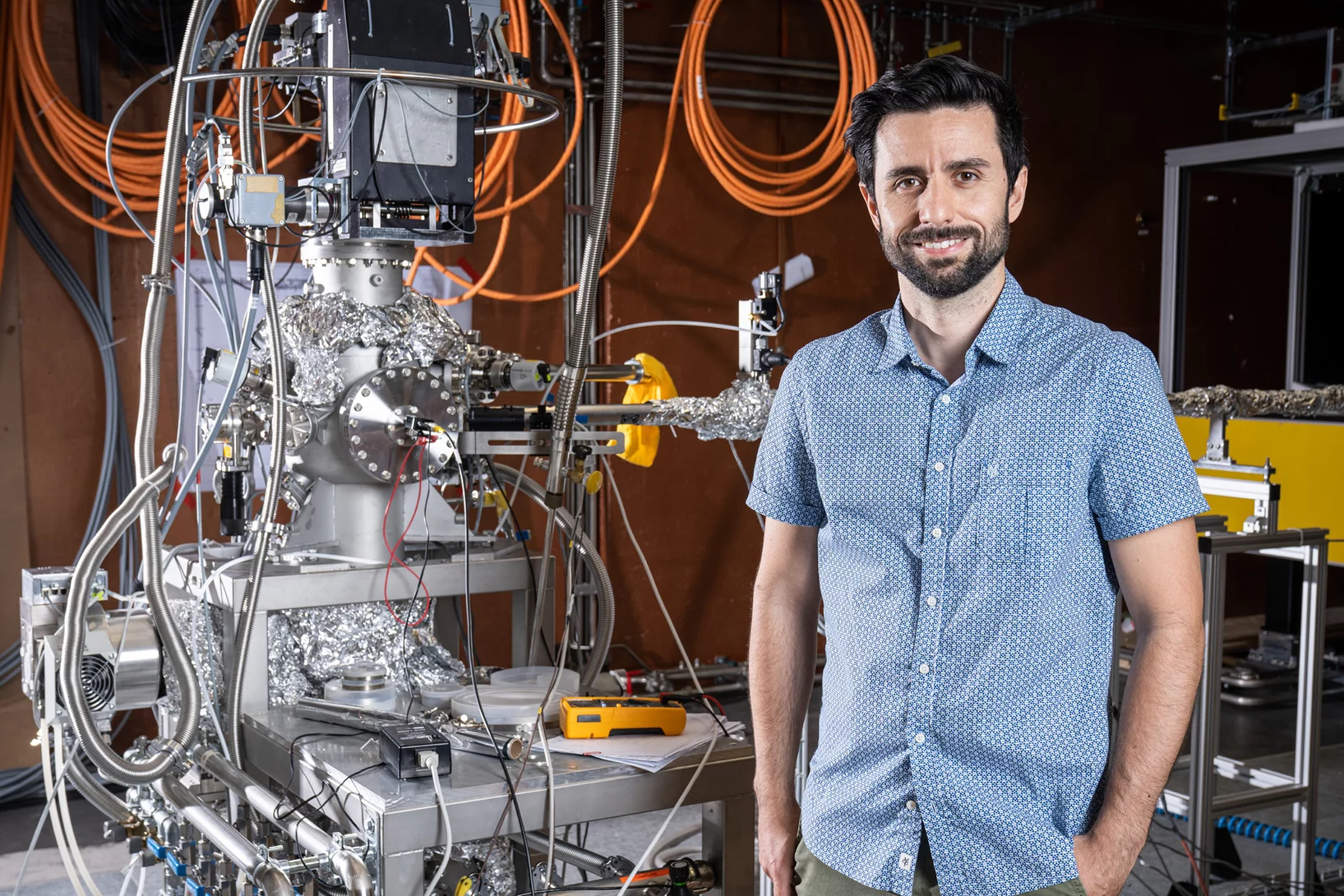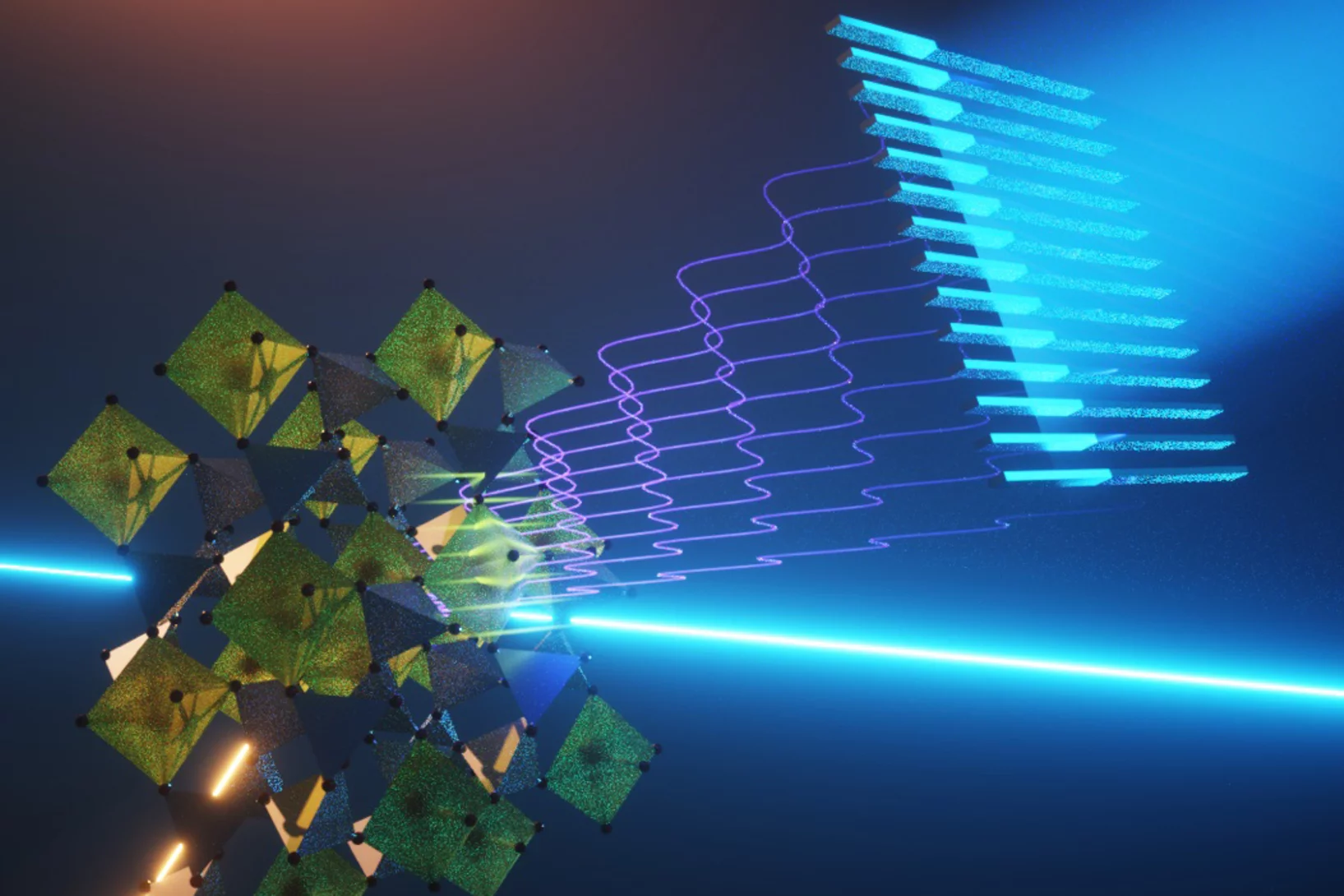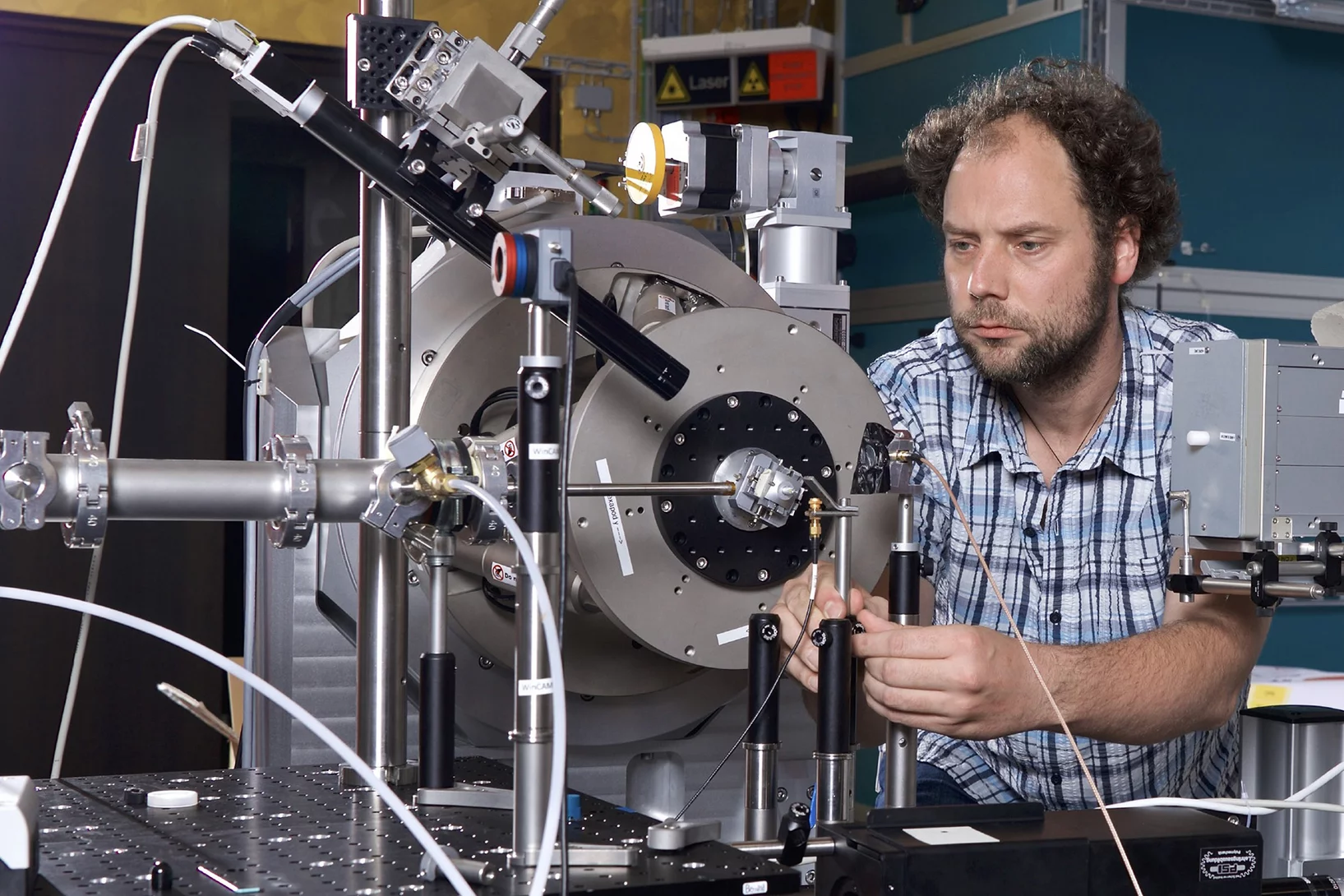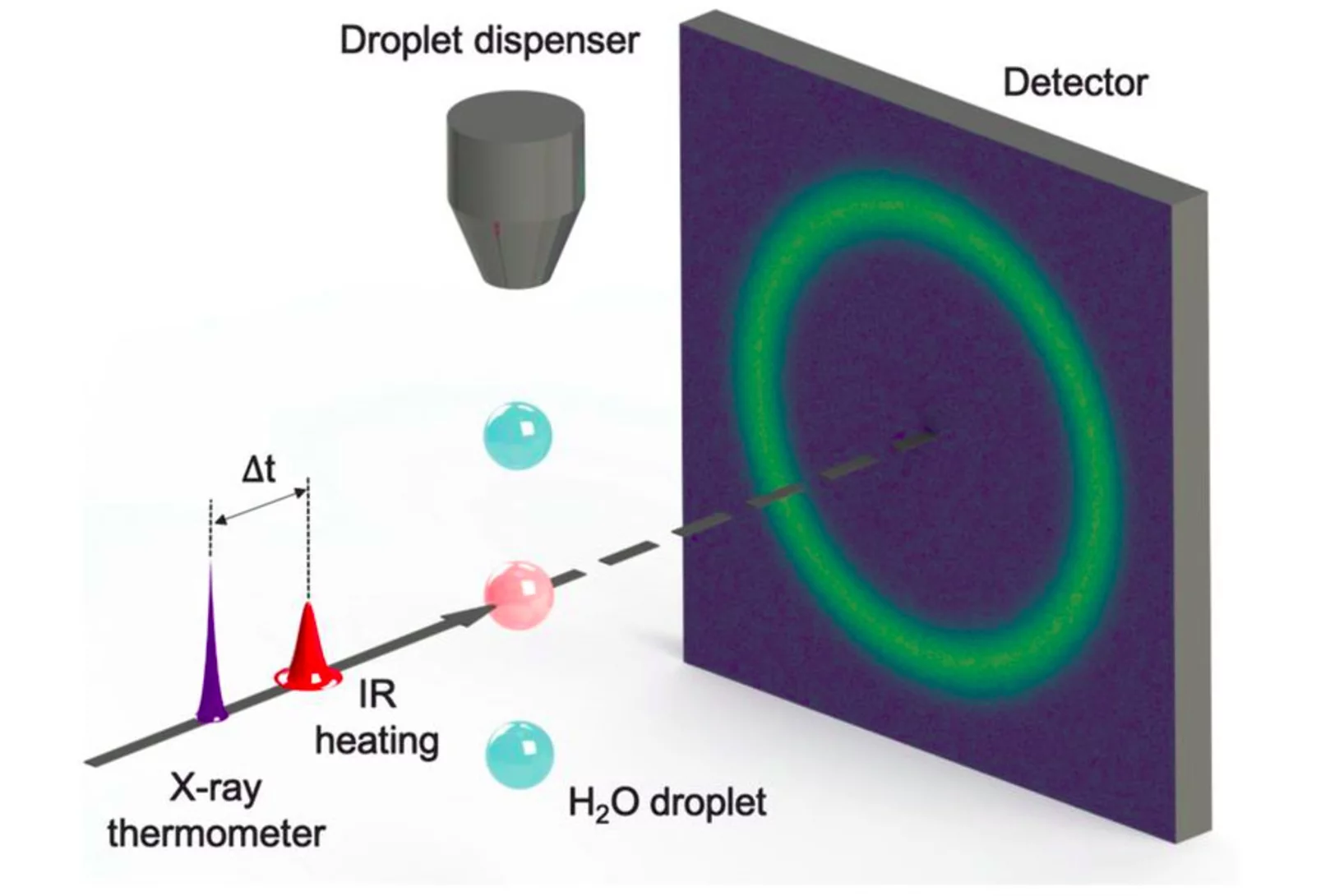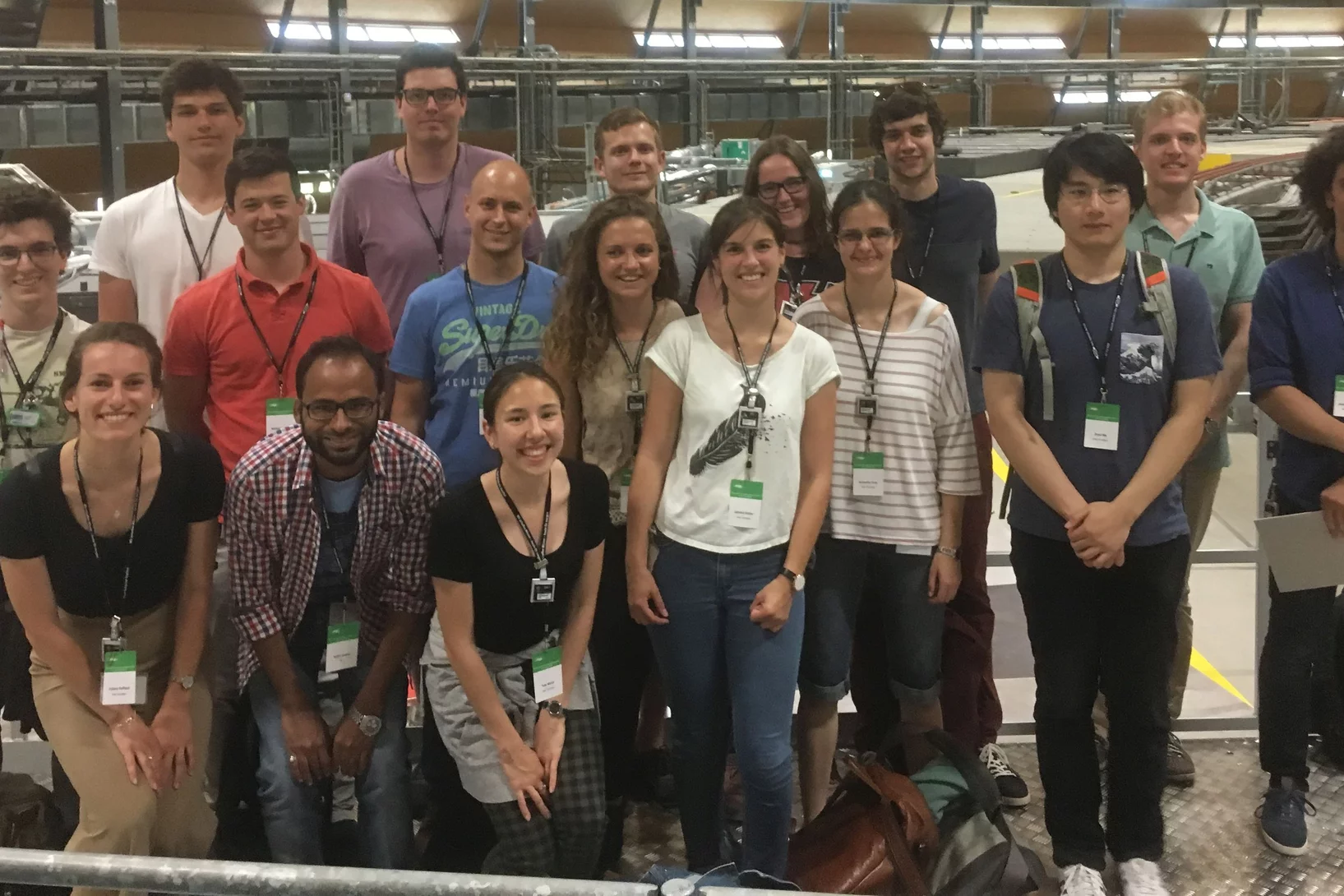Première lumière à Furka: les expériences peuvent démarrer
La voie vers des expériences uniques au monde est libre.
Une recherche qui ne plane pas sur un nuage rose
La lumière est essentielle à la vie. Pour les chercheurs, c’est aussi un merveilleux instrument qui leur permet de mieux comprendre la structure des matériaux.
Un nouveau site pour les sciences des données
Un nouveau site du Swiss Data Science Center va voir le jour au PSI. Cette expansion devrait donner un nouvel élan à la science des données en Suisse.
Une vision par rayons X d’une netteté unique
Un nouveau procédé du PSI permet une étude de physique quantique des matériaux au moyen de lasers à rayons X.
Aussi compact et performant qu’un couteau suisse
Le laser à rayons X à électrons libres SwissFEL est aussi compact, puissant et polyvalent que prévu.
HERCULES SCHOOL 2021 AT PSI
During the week of March 15 – 19, we had the pleasure to welcome 20 international PhD students, PostDocs and assistant professors at PSI, taking part in the first virtual HERCULES SCHOOL on Neutrons & Synchrotron Radiation.
Regarder les protéines des récepteurs se courber
Les récepteurs couplés aux protéines G servent de médiateurs dans l'organisme. Dans une interview Ramon Guixà explique comment il donne vie aux molécules réceptrices à l'écran.
Conduction control in nanoparticles
Light induced propagation strain pulse, converting nanoparticles of Ti3O5 from semiconducting to metallic phase.
Ultrafast calorimetry of deeply supercooled water
FEL-based ultrafast calorimetry measurements show enhancement and maximum in the isobaric specific-heat.
Etape majeure pour la nouvelle ligne de faisceau du SwissFEL
La deuxième ligne de faisceau est en train d’être mise en service au SwissFEL, le laser à rayons X à électrons libres de l’Institut Paul Scherrer PSI. Baptisée Athos, elle devrait permettre aux chercheurs de comprendre le fonctionnement des catalyseurs et le rôle de certaines biomolécules dans le déclenchement de maladies génétiques.
SwissFEL: la mégachile des murailles s’y sent comme un poisson dans l’eau
En 2013, lors de la construction du SwissFEL, quelque cinq hectares de forêt ont été défrichés et réaménagés afin de servir de nouvel habitat pour la faune et la flore. Des biologistes et des ingénieurs forestiers viennent de tirer un bilan intermédiaire du succès de ce projet de renaturation. Et ils sont enthousiastes.
Spin cascade and doming in ferric hemes
In biology, structure and function are closely interwoven. A case in point is oxygen transport in the lungs, which relies on ferrous heme proteins adopting dome-like shapes.
First light in the SwissFEL Maloja endstation
The first endstation at the SwissFEL Athos soft X-ray branch is rapidly developing and on track for first experiments in 2021.
Advances in long-wavelength native phasing at X-ray free-electron lasers
Long-wavelength pulses from the Swiss X-ray free-electron laser (XFEL) have been used for de novo protein structure determination by native single-wavelength anomalous diffraction (native-SAD) phasing of serial femtosecond crystallography (SFX) data.
«Forschung online erleben»: Mittendrin statt nur dabei
Erstmals Live-Rundgang durch eine Grossforschungsanlage per Video-Stream. Am 9. September haben Interessierte exklusiv die Möglichkeit, sich von Experten des PSI durch den neuen Freie-Elektronen-Röntgenlaser SwissFEL führen zu lassen und zu erfahren, welche Rätsel der Materie und der Natur sich damit lösen lassen.
Elucidation du mécanisme d’une pompe à sodium contrôlée par la lumière
Des chercheurs de l’Institut Paul Scherrer PSI ont réussi une première: réaliser des prises de vue d’une pompe à sodium en action, plus précisément d’une pompe à sodium de cellules bactériennes contrôlée par la lumière. Ces éléments de connaissance sont prometteurs pour le développement de nouvelles méthodes dans le domaine de la neurobiologie. Pour leurs analyses, les chercheurs ont utilisé le nouveau laser à rayons X à électrons libres SwissFEL.
A la recherche du matériau électroluminescent du futur
A l’Institut Paul Scherrer PSI, des chercheurs ont scruté l’intérieur d’un matériau prometteur pour les diodes organiques électroluminescentes (OLED). Leurs conclusions contribueront au développement de matériaux électroluminescents à très bon rendement lumineux et peu coûteux à la fabrication.
SwissFEL: Athos fait de grands progrès
La nouvelle ligne de faisceaux à rayons X au laser à électrons libres SwissFEL du PSI sera bientôt opérationnelle. En décembre, Athos a fourni pour la première fois de la lumière laser, même plus tôt que prévu, à la grande joie des chercheurs en charge de sa construction.
Recherche et optimisation – le SwissFEL en 2019
La plus récente grande installation de recherche du PSI, le SwissFEL, est achevée. Elle a commencé à fonctionner normalement en janvier 2019. Henrik Lemke, responsable du groupe SwissFEL Bernina, tire un premier bilan.
La star à l’écran: une machine moléculaire
Des chercheurs de l’Institut Paul Scherrer PSI ont filmé une machine moléculaire en mouvement grâce à la Source de Lumière Suisse SLS, et ainsi révélé comment fonctionne la production d’énergie au niveau des cellules membranaires. Ils ont développé à cet effet une nouvelle méthode qui pourrait permettre des succès inédits dans l’analyse des processus cellulaires.
PSI School for Master Degree Students - Introducing Photons, Neutrons and Muons for Condensed Matter Physics and Materials Science
From 17 – 21 June 2019 the Neutron and Muon Division (NUM) and the Photon Science Division (PSD) of PSI hosted 18 Master Degree students of physics, chemistry, materials and interdisciplinary science, as well as nuclear engineering to provide an introduction to the characterization of materials with large scale facilities like SINQ, SμS, SLS and SwissFEL. The course taught a basic understanding of how photons, neutrons and muons interact with matter, and how this knowledge can be used to solve specific problems in materials research.
Details of the program can be found at http://indico.psi.ch/event/PSImasterschool
First serial femtosecond crystallography experiment using SwissFEL’s large bandwidth X-ray pulses
The typical mode of operation at XFEL facilities uses the so-called self-amplified spontaneous emission (SASE) process to generate the short, bright X-ray pulses. This mode of operation is stochastic in nature, causing some variance in intensity and spectrum on a shot-to-shot basis, which makes certain types of crystallographic measurements much more challenging.
Towards X-ray Transient Grating Spectroscopy at SwissFEL
The high brilliance of new X-ray sources such as X-ray Free Electron Laser opens the way to non-linear spectroscopies. These techniques can probe ultrafast matter dynamics that would otherwise be inaccessible. One of these techniques, Transient Grating, involves the creation of a transient excitation grating by crossing X-ray beams on the sample. Scientists at PSI have realized a demonstration of such crossing by using an innovative approach well suited for the hard X-ray regime.
First femtosecond protein pump-probe measurements at SwissFEL
A major milestone in the commissioning of SwissFEL has been reached: the first pump-probe experiments on proteins have been successfully carried out. Crystals of several retinal-binding proteins were delivered in a viscous jet system and a femtosecond laser was used to start the isomerization reaction. Microsecond to sub-picosecond snapshots were then collected, catching the retinal proteins shortly after isomerization of the chromophore.
L'UE accorde 14 millions à des chercheurs suisses
Une prestigieuse bourse de l’Union européenne a été décernée à une équipe incluant trois chercheurs du Domaine des EPF. Les scientifiques ont reçu aujourd’hui le contrat signé de l’UE qui confirme ce financement exceptionnellement important de 14 millions d’euros. Ce montant va leur permettre d’étudier certains effets quantiques qui pourraient constituer l’épine dorsale de l’électronique du futur.
SwissFEL's First Call for Proposals
The first SwissFEL call for proposals took place, deadline for submission was the 15th of September. In this first call for proposals SwissFEL received overwhelming interest from the user community. A total of 47 proposals were submitted for the SwissFEL Alvra experimental station and 26 for the Bernina experimental station. The Proposal Review committee PRC took place on 18-19 October 2018.
Bernina status first summer shutdown
The summer shutdown was used to install more missing hardware. With the new components the Bernina instrument will be already very close to the full design capabilities when the exciting time of user experiments will begin in 2019.
First serial femtosecond crystallography (SFX) pilot user experiment at SwissFEL
On the 7th to 12th of August 2018, a collaborative group of scientists from the Paul Scherrer Institute and members of the LeadXpro and Heptares pharmaceutical companies led by Karol Nass (PSI macromolecular crystallography MX-SLS group) performed the first serial femtosecond crystallography (SFX) pilot user experiment at the SwissFEL X-ray free electron laser (XFEL).
MOOCs – a paradigm shift in education
In March 2018, the nine-week MOOC “Introduction to synchrotrons and x-ray free-electron lasers” (abbreviated to “SYNCHROTRONx”) came online via the edX provider of the École Polytechnique Fédérale de Lausanne (EPFL), created by Phil Willmott of the Swiss Light Source, Paul Scherrer Institute. “MOOC” is an acronym for “massive open online course”, a teaching platform started in the first decade of this century, which has become increasingly popular in the last five to six years. MOOCs have no limits to participation and are free. Some of the most popular MOOCs can attract many tens of thousands of participants. Even the most specialized subjects may have an initial enrollment of over a thousand, more than an order of magnitude larger than that typically found in traditional higher education. There were over 70 million MOOC enrollments covering nearly 10’000 subjects offered by the top five providers in 2017 alone!
A first glance at the SwissFEL x-rays wave-front
X-ray Free Electron Lasers (XFELs) combine the properties of synchrotron radiation (short wavelengths) and laser radiation (high lateral coherence, ultrashort pulse durations). These outstanding machines allow to study ultra-fast phenomena at an atomic level with unprecedented temporal resolution for answering the most intriguing open questions in biology, chemistry and physics.
